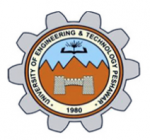ABSTRACT
Pakistan lies in one of the most tectonically active regions of the world. The latest destructive 2005 Kashmir earthquake of magnitude 7.6 struck the northern part of Pakistan which caused death toll of about a hundred thousand people and monitory losses of about five billion US dollars. After this earthquake, most of research activities were directed to define earthquake hazard. However, amongst other problems in those studies, one hard decision is the use of attenuation relationship as no such equation is developed for Pakistan. These studies either do not consider the newly developed New Generation Attenuation (NGA) equations or use a single NGA equation. The purpose of this study is to utilize all NGA equations to define seismic hazard in terms of peak horizontal acceleration using Deterministic Seismic Hazard Analysis (DSHA) for a site near Tarbela Dam, Pakistan. The PGAs from all NGAs are weighted to get mean PGA for design. The site of interest, where previously recorded PGA was 0.16g for Kashmir 2005 earthquake-150 Km away from the epicenter, is surrounded by 8 faults. This site has a forty feet high slope inclined at 53° to the horizontal and made of dense gravels with a mixture of silt, clay, and sand. On top and bottom of the slope, boy’s hostels are being built. This necessitates seismic hazard analysis to be evaluated and a suit of acceleration time histories be selected for dynamic analysis of the slope. Three time histories are selected in this study from real earthquakes that matches parameters with the controlling earthquake.
To share on other social networks, click on any
share button. What are these?





